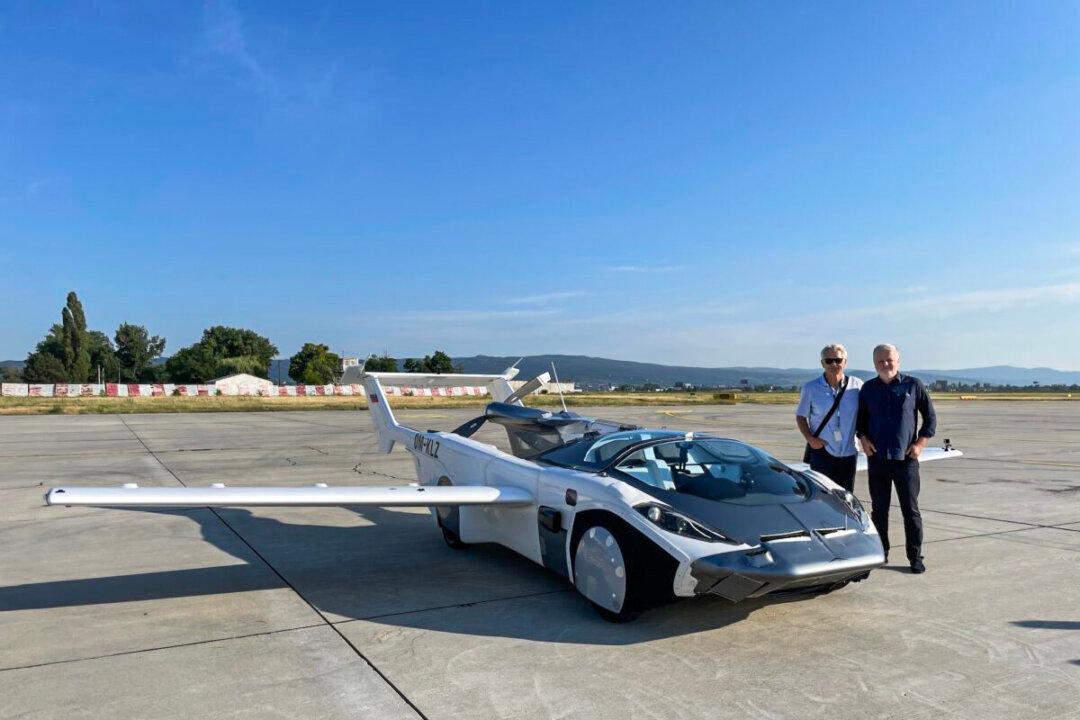A hybrid car-airplane known as “AirCar” has been issued a certificate of airworthiness by the Slovakian civil aviation authority, potentially paving the way for the future of flying vehicles.
The dual-mode car-aircraft vehicle, which looks like a sports car, was created by a team of eight highly-skilled specialists at the Slovakian company Klein Vision, which was founded by Professor Stefan Klein.





